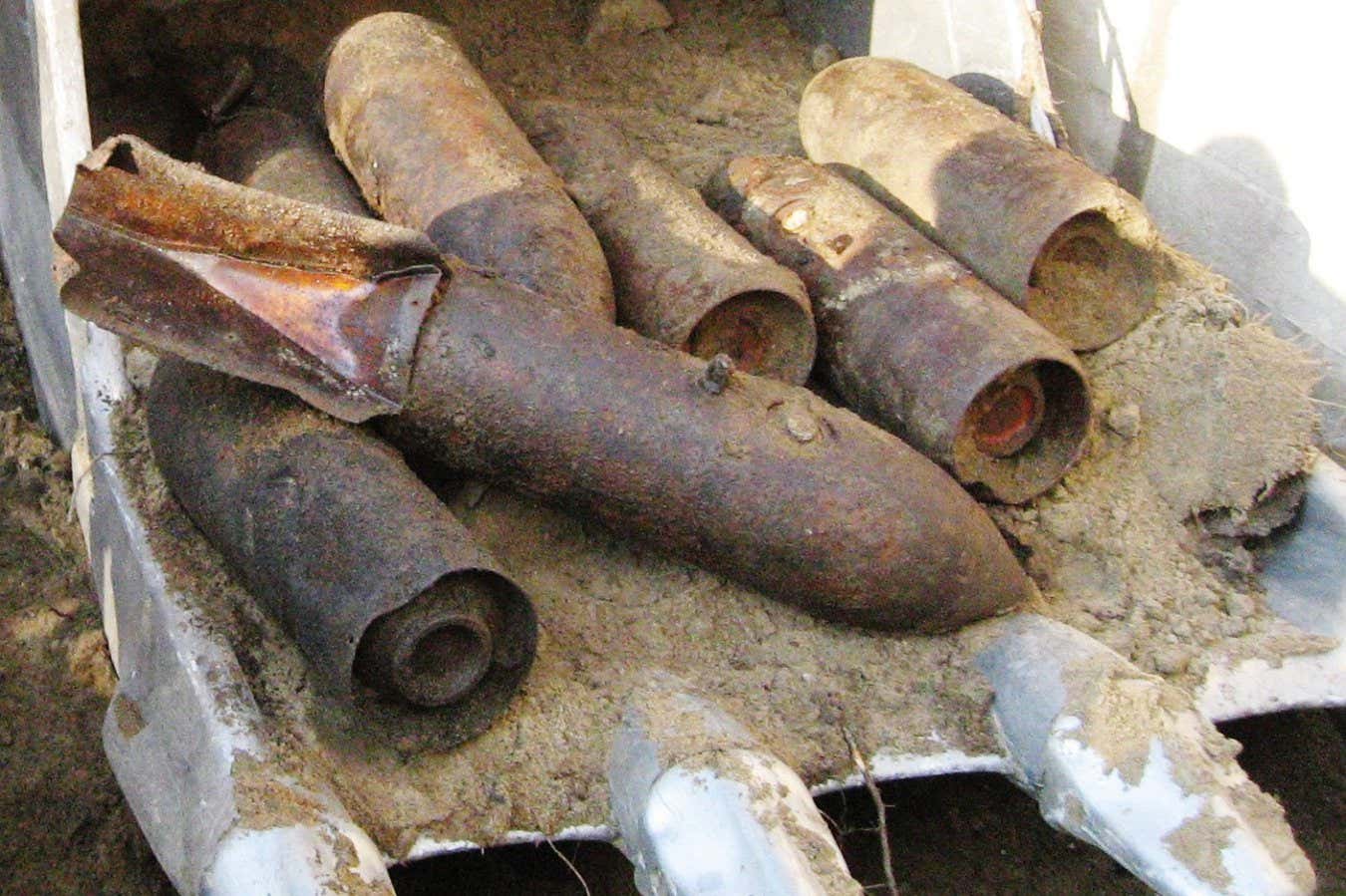An explosive found inside many bombs and shells used during the first and second world wars is becoming more likely to explode in response to impacts
By Michael Le Page
27 March 2024
Ageing explosives from unexploded bombs are becoming more dangerous
Geir P. Novik (2024)
A study of unexploded shells from the second world war has shown that one of the explosives they contain is becoming more sensitive to impacts, meaning it could be set off if they are dropped during disposal. This explosive, called Amatol, was widely used during the first and second world wars, and is still in some of the ammunition being used during the Russian war in Ukraine.
“Based on our findings, we can say that it’s relatively safe to handle, but you can’t handle it as like TNT,” says Geir Petter Novik at the Norwegian Defence Research Establishment. “It can certainly go off if it’s dropped, as opposed to TNT.”
Read more
Biogel armour can stop a supersonic projectile in its tracks
Advertisement
There are millions of tonnes of unexploded ammunition around the world, some in old ammunition dumps and some in shells and bombs that failed to detonate after being fired or dropped. There is a widespread misconception that this unexploded ammunition is becoming less dangerous over time, says Novik. In a 2022 study, he tested samples of TNT and PETN – two of the most widely used high explosives – taken from bombs and shells from the second world war (WWII), and found there was no deterioration in their explosive properties.
Now, he has tested the impact sensitivity of five samples of Amatol taken from unexploded WWII bombs and shells found in Norway. The test involved dropping weights from different heights on small samples to see what it takes to make them explode. All five samples were more sensitive to impacts than expected for Amatol, with one sample being four times more sensitive.
The findings will change how he and his team handle unexploded ordnance, says Novik. For instance, when clearing dumps, they will transport smaller quantities at a time. He now plans to try to find out why the impact sensitivity is increasing. “We suspect that it’s the formation of sensitive crystals or salts,” he says.
